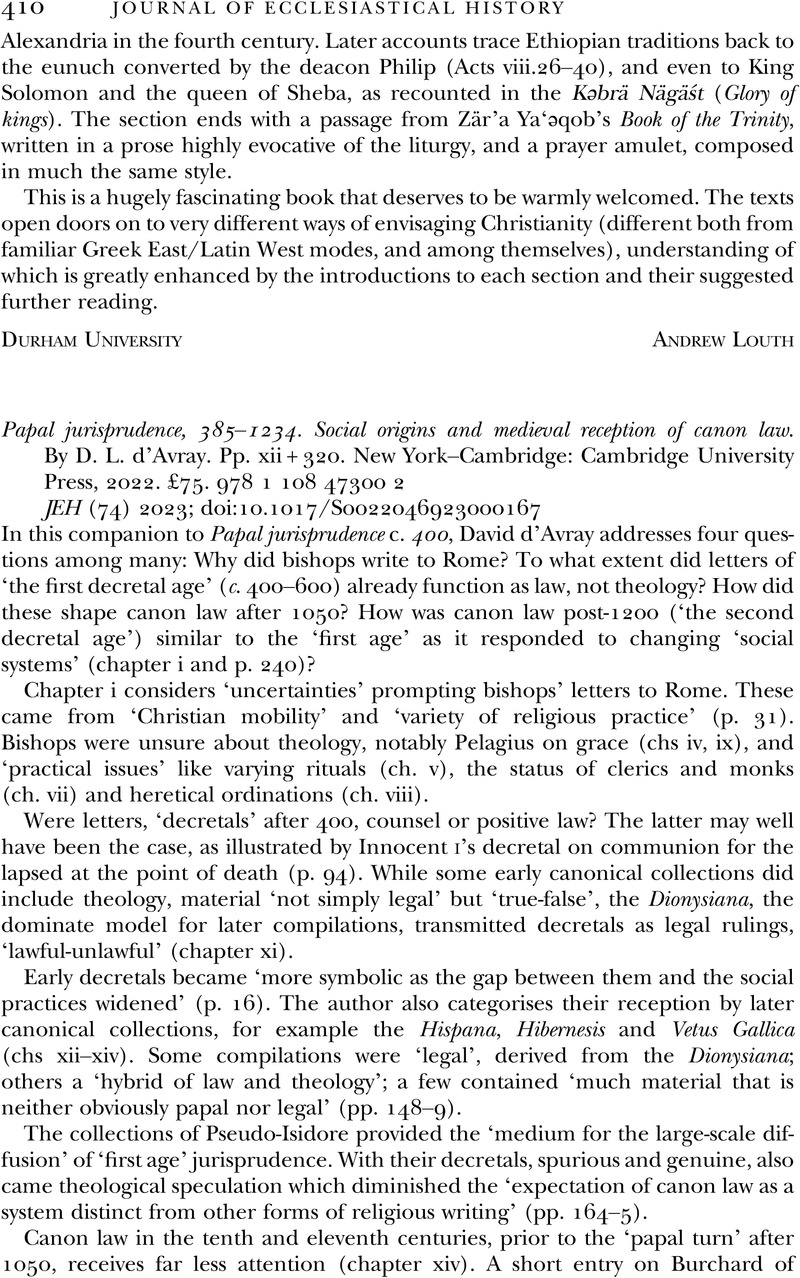No CrossRef data available.
Article contents
Papal jurisprudence, 385–1234. Social origins and medieval reception of canon law. By D. L. d'Avray. Pp. xii + 320. New York–Cambridge: Cambridge University Press, 2022. £75. 978 1 108 47300 2
Review products
Papal jurisprudence, 385–1234. Social origins and medieval reception of canon law. By D. L. d'Avray. Pp. xii + 320. New York–Cambridge: Cambridge University Press, 2022. £75. 978 1 108 47300 2
Published online by Cambridge University Press: 25 April 2023
Abstract
An abstract is not available for this content so a preview has been provided. Please use the Get access link above for information on how to access this content.

- Type
- Reviews
- Information
- Copyright
- Copyright © Cambridge University Press 2023



